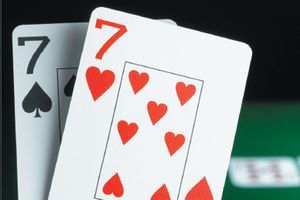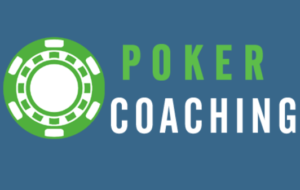 I was recently told about a hand by an amateur player that illustrates a few detrimental mistakes that many players make on a regular basis. If you work hard to develop fundamentally sound strategies away from the table, you will not make these mistakes in game.
I was recently told about a hand by an amateur player that illustrates a few detrimental mistakes that many players make on a regular basis. If you work hard to develop fundamentally sound strategies away from the table, you will not make these mistakes in game.
In a $.10/$.20 no-limit hold’em cash game with $35 effective stacks, the players in first and second position, as well as the hijack, limped. Our Hero decided to raise to $.70 with 7c-7s.
If Hero is going to raise, he should raise much larger. By making it $.70, he is going to frequently get called by all the previous limpers, resulting in him seeing a flop with what will usually be a marginal under pair. He may also sporadically get limp/3-bet by one of the limpers, forcing him to fold. I would much prefer Hero limp behind, allowing him to try to flop a set for the absolute minimum. There is really no point in raising. Another reasonable line would be to raise to about $1.70, which will usually either steal the pot before the flop or result in only one player calling, allowing Hero to play a pot in position with what will often be the best hand.
Surprisingly, only the small blind and the second limper called.
It is worth noting that when you limp and someone raises to only a small amount more, you should call and see the flop with most of your range. The only hands that make sense to fold are uncoordinated, reverse implied odds hands like Ah-6c and Ks-7d, but those should not be limped in the first place.
The flop came Qh-Qs-Jc. Everyone checked to Hero, who bet $1.50 into the $2.70 pot.
As more players see the flop, you should tend to play in a more straightforward manner because it is quite likely that someone connected with the board. Especially when the board contains two high cards, Hero should proceed with caution. This is a prime example of a spot where Hero should either check or bet small, perhaps $.70. By betting $1.50, when Hero gets called, you can be certain he is against either a better made hand or a strong draw that will fare well against 7-7. I would have checked behind with the intention of folding to any turn bet.
Only the small blind called. The turn was the (Qh-Qs-Jc)-8d. The opponent checked and Hero bet $3.00 into the $5.70 pot.
This bet makes no sense. The opponent could easily have a Queen or T-9 that will never fold. The opponent will also be unlikely to fold a Jack or 8 to this reasonably sized turn bet. I do not see a reason for Hero to turn his hand into a bluff, although I suppose he could make a sizable river bet to try to make the opponent fold all hands worse than trips, but even that may be optimistic.
The opponent called. The river was the (Qh-Qs-Jc-8d)-Jh. The opponent bet $9 into the $12.70 pot.
I generally dislike the opponent’s lead because it makes it impossible for Hero to bluff, and if you think about the opponent’s range, there should be very few bluffs beside exactly K-T. The opponent should almost certainly check his entire range, giving Hero the change to bluff.
Hero made an easy fold.
While this hand may seem like a standard to some, in my eyes, Hero lit $4.50 on fire. In a $.10/$.20 game, that is 22.5 big blinds, which is a hefty, completely unnecessary loss.
 Thank you for taking the time to read this blog post. If you enjoyed it, please share it with your friends. If you want to continue working on your poker skills, be sure to sign up for your free 7-day trial to my interactive training site, PokerCoaching.com.
Thank you for taking the time to read this blog post. If you enjoyed it, please share it with your friends. If you want to continue working on your poker skills, be sure to sign up for your free 7-day trial to my interactive training site, PokerCoaching.com.
Be sure to check back next week for another educational blog post. Thanks for reading!

Very much enjoyed! 😁 the way in which the obvious is pointed out is uncanny 😀
Thanks! I do my best.
bet sizing is a Struggle for me, most often I go all in. I have been told I am stupid to do this, but at least I don’t get bluffed out b4 seeing all the board.
Okay now you can call me stupid, too.